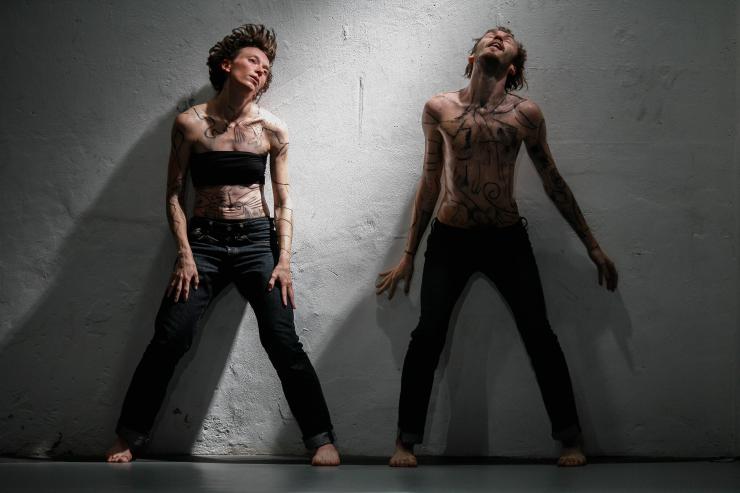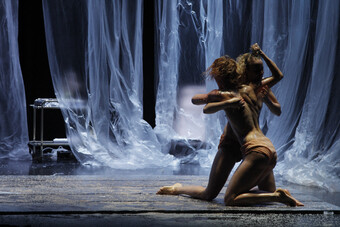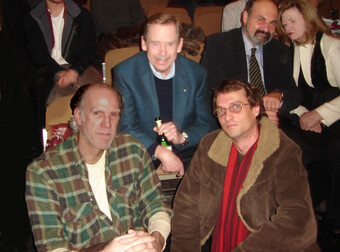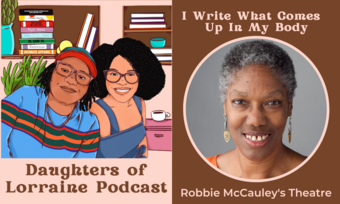Independent, Fringe, and Alternative
Czech Theatre Beyond the Big Houses
This is one of three posts exploring the state of the independent theatre in Hungary and the Czech Republic.
It is not very easy to think about and discuss Czech independent theatre. This is not only because the term “independent” is quite expansive, but also because Czech culture transformed after the revolution in 1989, as theatre began incorporating contemporary trends from beyond the border, and systems for and methods of funding transformed. When we talk about alternative, experimental, or nontraditional artistic practice, it is essential to go back to the Czech theatre of the seventies, which was full of experimental work, acting, improvisation, and even pantomime.
Independent theatre—theatre not based in drama and not state financed—now represents Czech culture abroad, has been a part of many international festivals, and has increased international cultural exchange and understanding.
Democracy granted artistic freedom to many theatremakers who were previously censored—simply put, everything was suddenly allowed. During this time of newfound creative license, many new theatres and ensembles were founded, though it was not always easy for them to survive. State financial support went to the big houses; smaller theatres had to apply for various grants every year, and still do today. As a result, some theatres are constantly unsure of their financial future.
In the years since the revolution, independent theatre has become an integral part of the Czech theatre scene. Independent theatre—theatre not based in drama and not state financed—now represents Czech culture abroad, has been a part of many international festivals, and has increased international cultural exchange and understanding. It provides an important contrast to the more traditional theatre typically seen. This broad-based theatre has created new conditions not only for artists, but also provoked authors and critics to think and write about the work in a different way.

Modern or contemporary Czech theatre bears many influences: physical theatre, contemporary dance, puppet theatre, author theatre, and new circus, amongst others. Alternative Czech theatre can also be divided into several categories, the most significant of which are contemporary dance theatre and physical theatre. The aim of this post is not to give a complete image of Czech alternative theatre—just to underline these two important parts of it.
Contemporary dance theatre is represented by many independent groups, but most well known are 420People (founded by dancers Nataša Novotná and Václav Kuneš, former members of Nederlands Dans Theater) whose creations oscillate between dance and acting. Dot504 (founded by dancer Lenka Ottová) experiments with physical theatre, focusing on the actor's body as universal artistic material. They also often cooperate with artists from other fields of theatre or its members work on individual and various solo projects, for example dancer Martina Hajdyla Lacová is one the most vivid personality of this group. VerTeDance, founded by two dancers, Veronika Kotlíková and Tereza Ondrová, incorporates dance, acting, and light design. Of course, a lot of these artists also work on solo projects and collaborate with different groups.

Physical theatre that draws from dance and experimental work is also very important. Spitfire Company, another company known well abroad, explores the possibilities of actors’ bodies on stage. The leaders of this group are dancer, actress, and performer Miřenka Čechová, and director and author Petr Boháč. Miřenka Čechová also founded a company called Tantehorse, a physical and mime theatre, with performer and mime Radim Vizváry. At first they engaged with the tradition of modern Czech pantomime, but later their projects started being informed by other influences as well, especially Japanese Buto. Nowadays, Miřenka Čechová is one of the most highly respected performers—her acting style melds classical dance, drama, pantomime, and physical experiments.
Teatr Novogo Fronta was founded in 1993 in Moscow by Aleš Janák and Irina Andreeva, and later moved and settled in Prague. Their performances are mostly based on international collaborations and experiments with dance and improvisation. Farm In The Cave is a theatre group that can hardly be called “only” physical theatre. Their work is inspired by many different approaches and experiments; every new production deals with various techniques, like puppets and documentary theatre. Founded by Slovak director Viliam Dočolomanský in 2001, it has developed into an intentionally international ensemble, made up of artists from various countries. Each of their performances is based on long-term, place-based research. The work and methodology of Farm In The Cave bears a resemblance to the Poor theatre Theatre of Jerzy Grotowski—performers concentrate their work in their own community.

This very short overview tried to give a look at two very strong tendencies of contemporary Czech alternative theatre. But what is important to add is that most of these groups do not have their own spaces for performing and usually their projects arise in partnership with independent houses for contemporary art. From this point I have to notice especially Holešovice, the city district of Prague which is kind of the Czech alternative theatre center, with some of the most significant spaces: Studio Alta or Alfred ve dvoře theatre. Both theatres cooperated with most of artists mentioned in this article and helped to create and improve their own unique style or poetics.









Comments
The article is just the start of the conversation—we want to know what you think about this subject, too! HowlRound is a space for knowledge-sharing, and we welcome spirited, thoughtful, and on-topic dialogue. Find our full comments policy here